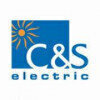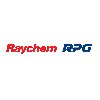
i
Laser Power &
Infra
Filter interviews by
Laser Power & Infra Electrical Project Engineer Interview Questions and Answers
Laser Power & Infra Electrical Project Engineer Interview Experiences
1 interview found
I applied via Walk-in and was interviewed in Feb 2024. There was 1 interview round.
(1 Question)
- Q1. Full details in transformer Star delta connection Electrical insulator
- Ans.
Transformer is a device that transfers electrical energy between two or more circuits through electromagnetic induction. Star delta connection is a method used to connect three-phase electrical motors. Electrical insulators are materials that resist the flow of electric current.
Transformer: device that transfers electrical energy through electromagnetic induction
Star delta connection: method for connecting three-phase ...
Top trending discussions






Interview questions from similar companies

Electrical Project Engineer Interview Questions & Answers
Polycab Wiresposted on 19 Dec 2022
I applied via Walk-in and was interviewed in Nov 2022. There were 4 interview rounds.

Basic mathematics aptitudes.
Basic level of core field related question. (Fresher)
(3 Questions)
- Q1. Electrical Engineering
- Ans. Explain basic level of Electrical Engineering related answers like, type of switch gear, Type of Transformer, Type of motors, DOL Starter, Star Delta Starter, SLD, circuit diagram, Types of Power Plants, Step wise explain how to power delivers to power station to residential/commercial/industrial.
- Q2. Introduce yourself and working life style ?
- Q3. Why you interested in the post?
- Ans. Bcz it is best for growing my career and my skills development more strongly.
(3 Questions)
- Q1. What you know about this company?
- Ans. Research before the company related details where you are applying.
- Q2. Why you're interested to work in this company?
- Ans. Given answer is the best.. I see this opportunity as a way of my skill developing and contributing my skills to an exciting/ forward-thinking fast moving company/industry. Second one if company near about your hometown.. I see this company near about my home and I am easily work here and also take care my family (valid reason share).
- Q3. What your expectations from our company?
- Ans. My goals for the company are that it have work atmosphere in which I will contribute to the team, be recognized for my efforts, provide career security, and have the opportunity to advance within the company.
Interview Preparation Tips
- Electrical Engineering

I applied via Campus Placement and was interviewed before Jul 2021. There were 2 interview rounds.

(4 Questions)
- Q1. What are different types of cables
- Ans.
Different types of cables include coaxial, twisted pair, fiber optic, and USB.
Coaxial cable is used for cable TV and internet connections
Twisted pair cable is used for Ethernet connections
Fiber optic cable is used for high-speed data transmission over long distances
USB cable is used for connecting devices to a computer
- Q2. What did you do during internship
- Q3. Types of transformers, basic principles of transformers working
- Ans.
Transformers are electrical devices that transfer energy from one circuit to another through electromagnetic induction.
Transformers are of two types - step-up and step-down transformers
The basic principle of transformer working is electromagnetic induction
The transformer consists of two coils - primary and secondary
When an alternating current flows through the primary coil, it creates a magnetic field which induces a v...
- Q4. Working of induction motor
Interview Preparation Tips
- basics of electrical engineering
- Transformers
- Motors

Electrical Site Engineer Interview Questions & Answers
Polycab Wiresposted on 15 Jun 2021
I applied via Referral and was interviewed before Jun 2020. There was 1 interview round.
Interview Questionnaire
10 Questions
- Q1. Transmission voltage of 11 kv is normally used for distances up to...km
- Q2. What is the maximum range of voltage rating for belted cables are in used?
- Ans.
The maximum range of voltage rating for belted cables varies depending on the specific application and industry standards.
The voltage rating of belted cables can range from low voltage (LV) to high voltage (HV).
LV belted cables typically have a voltage rating of up to 1 kV.
HV belted cables can have voltage ratings ranging from 1 kV to several hundred kilovolts (kV).
The exact voltage rating of belted cables is determine...
- Q3. The distribution systems are mostly used in India
- Q4. Conventional flow assumes charges flow from
- Ans.
Conventional flow assumes charges flow from positive to negative terminals.
Conventional flow is based on the assumption that current flows from positive to negative terminals.
This convention is used in electrical engineering and circuit analysis.
For example, in a battery-powered circuit, conventional flow assumes that electrons flow from the positive terminal of the battery to the negative terminal.
- Q5. How much torque a synchronous motor can develop?
- Q6. An underground system cannot be operated above
- Q7. What can protect a cable against mechanical enjury?
- Ans.
Cable protectors can safeguard cables against mechanical injury.
Cable protectors can be used to cover and shield cables from physical damage.
Flexible conduits or cable trays can be installed to provide a protective pathway for cables.
Using cable ties or clamps to secure cables in place can prevent them from being accidentally pulled or strained.
Applying cable armor or armored cables can provide additional protection ag...
- Q8. Earth wire or ground wire is made of
- Ans.
The earth wire or ground wire is typically made of copper or aluminum.
The earth wire is an essential safety component in electrical systems.
It is used to provide a path for electrical current to safely discharge into the ground.
Copper is commonly used for earth wires due to its excellent conductivity and corrosion resistance.
Aluminum is also used in some cases, especially for overhead power lines.
The earth wire is usua...
- Q9. Average resistance of a human body is
- Ans.
The average resistance of a human body is approximately 1,000 ohms.
The resistance of a human body can vary depending on factors such as skin moisture, contact area, and voltage applied.
Dry skin has higher resistance compared to moist skin.
The resistance can be affected by the presence of sweat, water, or other conductive substances on the skin.
The resistance decreases when the contact area between the body and a conduc...
- Q10. The main function of fuse is to
Interview Preparation Tips

I applied via Walk-in and was interviewed in Sep 2021. There were 3 interview rounds.
Interview Questionnaire
1 Question
- Q1. Projects related
Interview Preparation Tips

Electrical Supervisor Interview Questions & Answers
KEI Industriesposted on 6 May 2022

(1 Question)
- Q1. Salary discussion and total experience
(1 Question)
- Q1. REC Standard LT and HT line overhead and underground
(1 Question)
- Q1. Final salary discussion
Interview Preparation Tips

Electrical Engineer Interview Questions & Answers
Amber Enterprises Indiaposted on 1 Sep 2022
I applied via LinkedIn and was interviewed in Aug 2022. There were 2 interview rounds.

(2 Questions)
- Q1. Related electrical question
- Q2. Like wire connection
Interview Preparation Tips

Electrical Site Engineer Interview Questions & Answers
KEI Industriesposted on 8 Nov 2023
I applied via Naukri.com and was interviewed in May 2023. There were 4 interview rounds.

About your work style and work management
(4 Questions)
- Q1. Test your deep technical knowledge of your work
- Q2. Transformer working principle.
- Q3. Proses of new meter installation.
- Ans.
The process of new meter installation involves site survey, meter selection, installation, testing, and commissioning.
Site survey to determine the location and requirements for the new meter
Meter selection based on the specific needs and specifications of the site
Installation of the new meter by qualified electricians or engineers
Testing the meter to ensure accurate readings and proper functionality
Commissioning the me...
- Q4. What is the Proses of LOTO? How it's works?
- Ans.
LOTO stands for Lockout/Tagout. It is a safety procedure used to ensure that dangerous machines are properly shut off and not started up again prior to the completion of maintenance or servicing work.
LOTO involves isolating energy sources, locking them out, and tagging them to indicate that maintenance work is being performed.
Workers involved in the maintenance work are the ones who apply the locks and tags, ensuring t...
(4 Questions)
- Q1. Discussed about your salary
- Q2. Why you want this job?
- Q3. Why we hire you?
- Q4. Why are you leaving your previous company?
Interview Preparation Tips

Electrical Engineer Interview Questions & Answers
CG Power and Industrial Solutionsposted on 14 Jun 2025
I appeared for an interview before Jun 2024, where I was asked the following questions.
- Q1. What is a locomotive?
- Ans.
A locomotive is a rail transport vehicle that provides the motive power for trains.
Locomotives can be powered by diesel engines, electric motors, or steam engines.
They are designed to pull or push train cars along railway tracks.
Examples include the GE ES44AC diesel locomotive and the Siemens ACS-64 electric locomotive.
Locomotives are equipped with various controls for speed, braking, and safety.
They often have a disti...
- Q2. What is an auxiliary converter?
- Ans.
An auxiliary converter is a device that converts electrical energy for auxiliary systems in larger power systems.
Used to supply power to auxiliary equipment like control systems and lighting.
Commonly found in power plants, ships, and industrial applications.
Examples include DC-DC converters and AC-DC converters.
Enhances system reliability by providing backup power.
- Q3. What are the differences between Direct Current (DC) and Alternating Current (AC)?
- Ans.
DC flows in one direction, while AC changes direction periodically, affecting their applications and characteristics.
DC (Direct Current) flows steadily in one direction, e.g., batteries.
AC (Alternating Current) changes direction periodically, e.g., household power supply.
DC is used in low-voltage applications like electronics and batteries.
AC is used for high-voltage power transmission and in homes.
DC has a constant vo...
- Q4. What is a trainer, and what are the different types of trainers?
- Ans.
A trainer is a professional who imparts knowledge and skills in a specific field, using various methods and tools.
Types of trainers include: Technical Trainers (e.g., software training), Corporate Trainers (e.g., leadership skills), and Fitness Trainers (e.g., personal trainers).
Technical Trainers focus on specific skills or technologies, such as programming languages or software applications.
Corporate Trainers develop...
- Q5. What is control wiring?
- Ans.
Control wiring refers to the electrical connections that manage and control machinery and equipment operations.
Used in automation systems to connect sensors, switches, and controllers.
Examples include wiring for relays, contactors, and programmable logic controllers (PLCs).
Typically involves low voltage circuits for safety and efficiency.
Control wiring can be found in HVAC systems, industrial machinery, and home automa...
- Q6. What is an auxiliary converter, and what does it mean?
- Ans.
An auxiliary converter is a device that converts electrical energy for auxiliary systems in larger electrical systems.
Used in power systems to supply power to non-primary loads.
Examples include DC-DC converters for battery charging.
Common in renewable energy systems to manage energy flow.
Can provide power for control systems, lighting, and HVAC.
- Q7. What is a transformer?
- Ans.
A transformer is an electrical device that transfers electrical energy between circuits through electromagnetic induction.
Transforms voltage levels: steps up or steps down voltage.
Consists of primary and secondary coils wound around a magnetic core.
Used in power distribution systems to manage voltage levels.
Example: A step-down transformer reduces 220V to 12V for household use.
Essential for efficient long-distance elec...
- Q8. What are high tension (HT) and low tension (LT) panels?
- Ans.
HT panels handle high voltage, while LT panels manage low voltage in electrical distribution systems.
HT panels operate at voltages above 1 kV, typically used in substations.
LT panels operate at voltages below 1 kV, commonly used in residential and commercial buildings.
HT panels are used for transmission and distribution of electricity over long distances.
LT panels are used for local distribution and powering appliances...
- Q9. What are the types of motor control panels?
- Ans.
Motor control panels manage and control electric motors, ensuring efficient operation and protection.
Direct-On-Line (DOL) Starter: Simple and cost-effective for small motors.
Star-Delta Starter: Reduces starting current for larger motors.
Variable Frequency Drive (VFD): Controls motor speed and torque by varying frequency.
Soft Starter: Gradually increases motor voltage to reduce mechanical stress.
Programmable Logic Contr...
- Q10. What are the types of power control panels?
- Ans.
Power control panels manage and distribute electrical power in various applications, ensuring safety and efficiency.
Motor Control Centers (MCC): Used for controlling motors in industrial applications.
Distribution Boards: Distribute electrical power to various circuits.
Automatic Transfer Switch Panels: Switch between power sources automatically during outages.
Control Panels for Generators: Manage generator operations an...
Interview Preparation Tips

Aptitude+ Technical
(1 Question)
- Q1. Engineering Questions, Technology, Technical Knowledge, Projects, Training, Communication Skills, Leadership, Primary, Secondary, Business, Skill, Distributor Handling, Scouting.
Interview Preparation Tips
Laser Power & Infra Interview FAQs
Tell us how to improve this page.
Laser Power & Infra Interviews By Designations
- Laser Power & Infra Marketing Executive Interview Questions
- Laser Power & Infra Electrical Project Engineer Interview Questions
- Laser Power & Infra Production Supervisor Interview Questions
- Laser Power & Infra Electrical Engineer Interview Questions
- Laser Power & Infra Quality Engineer Interview Questions
- Laser Power & Infra Financial Controller Interview Questions
- Laser Power & Infra Senior Project Engineer Interview Questions
- Laser Power & Infra Site Engineer Interview Questions
- Show more
Interview Questions for Popular Designations
- Project Engineer Interview Questions
- Electrical Engineer Interview Questions
- Service Engineer Interview Questions
- Electrical Technician Interview Questions
- Electrical Supervisor Interview Questions
- Executive Engineer Interview Questions
- Senior Project Engineer Interview Questions
- Senior Electrical Engineer Interview Questions
- Show more
Overall Interview Experience Rating
based on 1 interview experience
Difficulty level
Duration
Interview Questions from Similar Companies
Laser Power & Infra Electrical Project Engineer Reviews and Ratings
based on 3 reviews
Rating in categories
|
Senior Engineer
54
salaries
| ₹3.6 L/yr - ₹6.5 L/yr |
|
Assistant Manager
29
salaries
| ₹4.6 L/yr - ₹8.4 L/yr |
|
Site Engineer
29
salaries
| ₹2.7 L/yr - ₹4.6 L/yr |
|
Project Engineer
28
salaries
| ₹2.4 L/yr - ₹5.2 L/yr |
|
Electrical Engineer
26
salaries
| ₹1.7 L/yr - ₹5 L/yr |

Polycab Wires

CG Power and Industrial Solutions

C&S Electric

KEI Industries
- Home >
- Interviews >
- Laser Power & Infra Interview Questions














